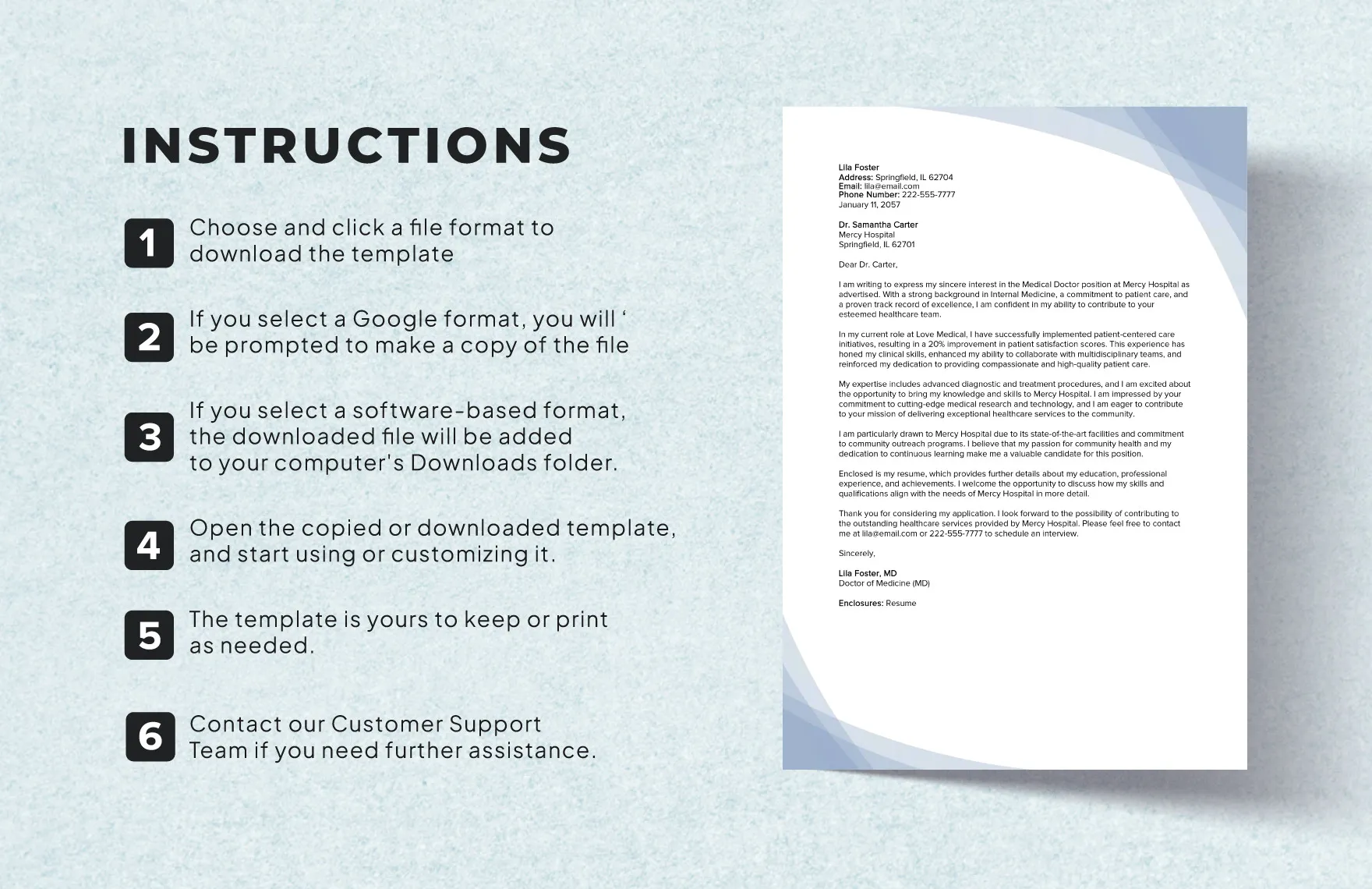Crafting a Doctor Cover Letter
A well-written cover letter is a crucial element in any doctor’s job application. It serves as your initial introduction to potential employers, offering you the chance to make a strong first impression and distinguish yourself from other candidates. This comprehensive guide will walk you through the essential steps of creating a compelling doctor cover letter that grabs attention and increases your chances of landing an interview. Mastering the art of cover letter writing is a vital step in your career progression, helping you secure your dream job in the medical field. Whether you’re a recent graduate or a seasoned professional, a well-crafted cover letter can significantly enhance your application and showcase your unique qualifications.
Understanding the Importance of a Cover Letter
Cover letters are more than just a formality; they are an opportunity to provide context to your resume and demonstrate your personality, passion, and suitability for a specific role. They allow you to elaborate on your experiences, highlight your accomplishments, and explain why you are the perfect fit for the position. A strong cover letter shows potential employers that you are genuinely interested in the opportunity and have taken the time to understand their needs. In a competitive job market, a well-crafted cover letter can be the deciding factor in securing an interview.
Why Cover Letters Matter for Doctors
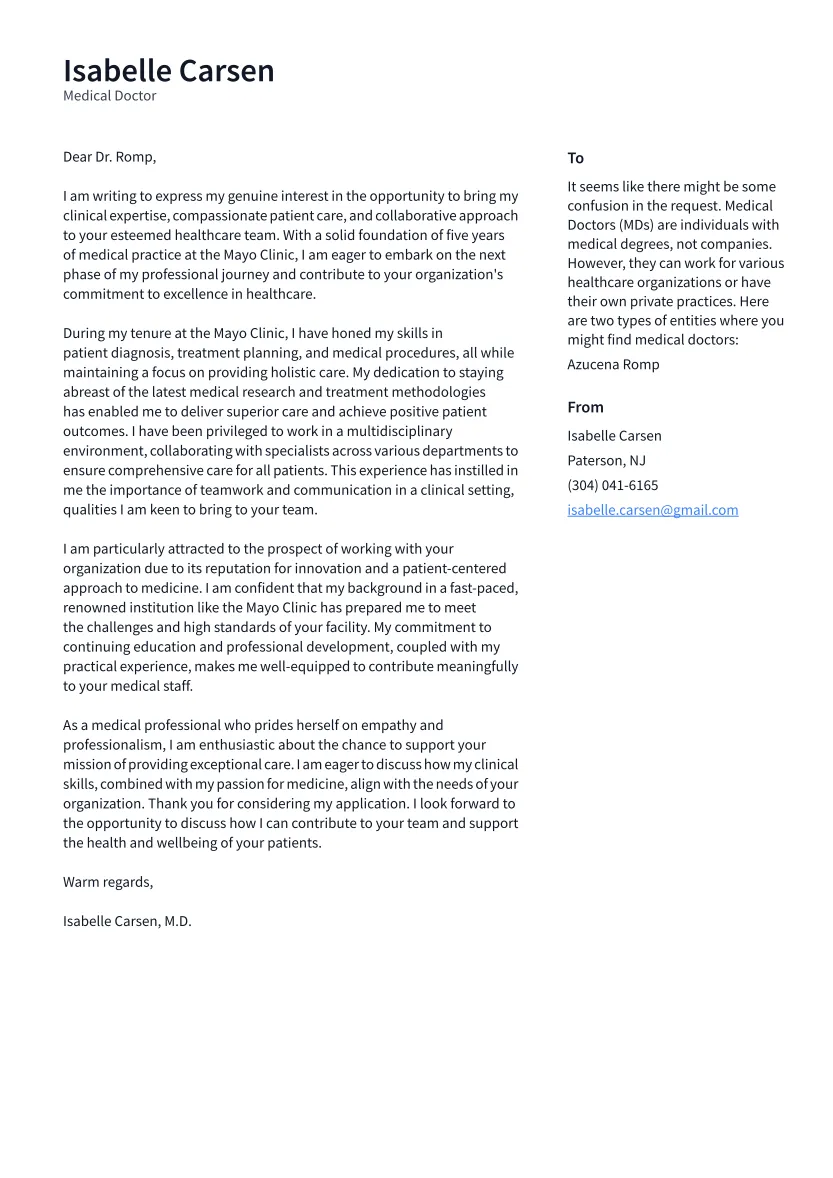
For doctors, cover letters are particularly important. They allow you to demonstrate your patient-centered approach, your commitment to medical excellence, and your understanding of the specific demands of the job. You can use the cover letter to express your enthusiasm for the position, highlight your relevant skills and experience, and show how your values align with the organization’s mission. Furthermore, it offers a space to address any gaps in your resume or explain any career transitions. In essence, the cover letter is your chance to connect with the hiring manager on a more personal level and make a compelling case for why you should be hired.
Common Cover Letter Mistakes
Avoiding common mistakes is crucial for a successful cover letter. One of the most frequent errors is sending a generic letter. Tailoring your letter to each job application is essential, showing the employer that you have taken the time to understand their specific requirements. Another mistake is simply repeating information from your resume; instead, use the cover letter to expand on your experiences and provide additional context. Typos and grammatical errors can also undermine your credibility; therefore, always proofread your letter carefully. Finally, failing to highlight your key skills and achievements and not showcasing enough enthusiasm are also common pitfalls that can weaken your application.
Essential Components of a Doctor Cover Letter
A well-structured cover letter typically includes several key components. Each section serves a specific purpose in conveying your qualifications and expressing your interest in the position. By carefully crafting these components, you can create a cover letter that effectively communicates your strengths and increases your chances of getting an interview. Pay attention to detail in each section, ensuring that your letter is clear, concise, and compelling. Following this structured approach will help you present a professional and polished application.
Contact Information and Date
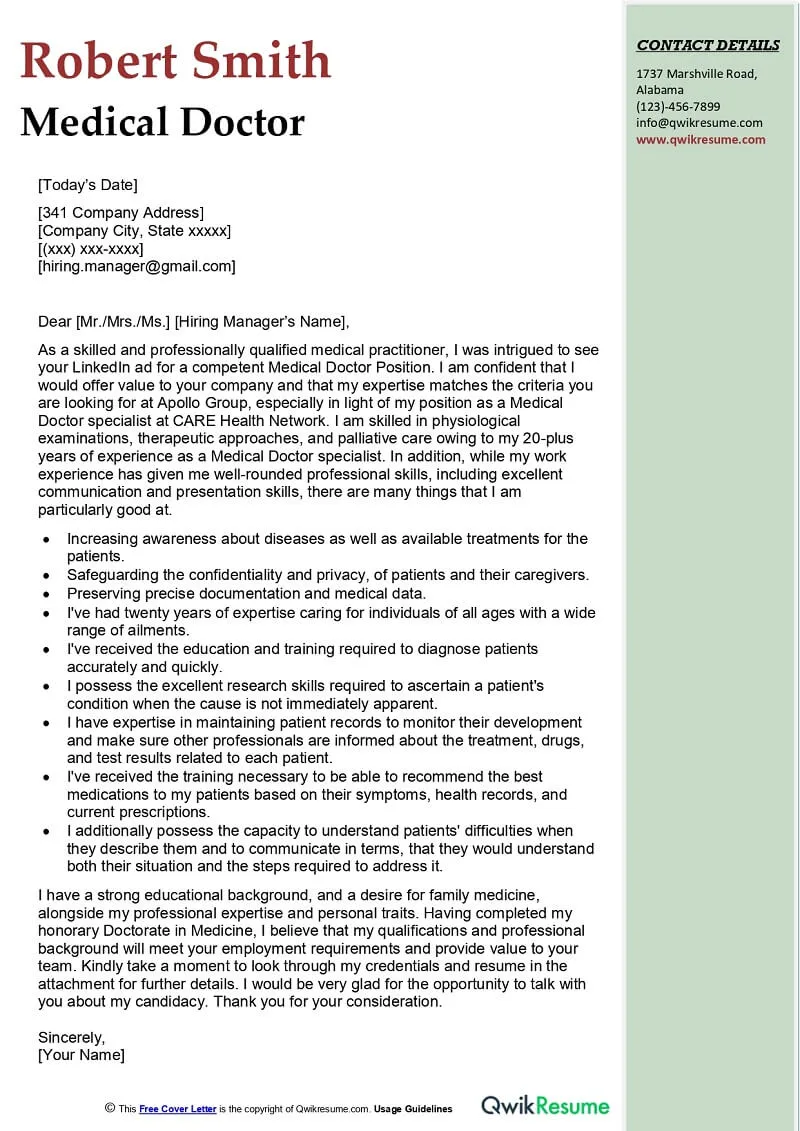
Start your cover letter with your contact information, including your full name, address, phone number, and email address. This information should be placed at the top of the letter, typically left-aligned. Immediately below your contact information, include the date. Make sure the date is current, reflecting when you are submitting your application. This ensures that the employer has the necessary details to contact you easily and that your application is up-to-date.
Professional Salutation
Use a professional salutation to address the hiring manager or the specific person mentioned in the job posting. If possible, find the name of the hiring manager and address the letter to them directly. If a name is not available, use a professional greeting, such as “Dear Hiring Manager.” Avoid using generic greetings like “To Whom It May Concern.” Using the correct name shows you’ve done your research and are committed to the application. This personal touch can make a significant difference in how your letter is received.
Opening Paragraph – Captivate the Reader
Your opening paragraph is your first opportunity to grab the reader’s attention. Start with a concise and engaging statement that immediately indicates your interest in the position. Mention the job title you are applying for and where you found the advertisement. Briefly highlight your key qualifications or experiences that make you a strong candidate. Aim to make your opening paragraph compelling, setting the tone for the rest of the letter. This initial section should clearly convey your enthusiasm and demonstrate your understanding of the job’s requirements.
Highlighting Your Qualifications and Experience
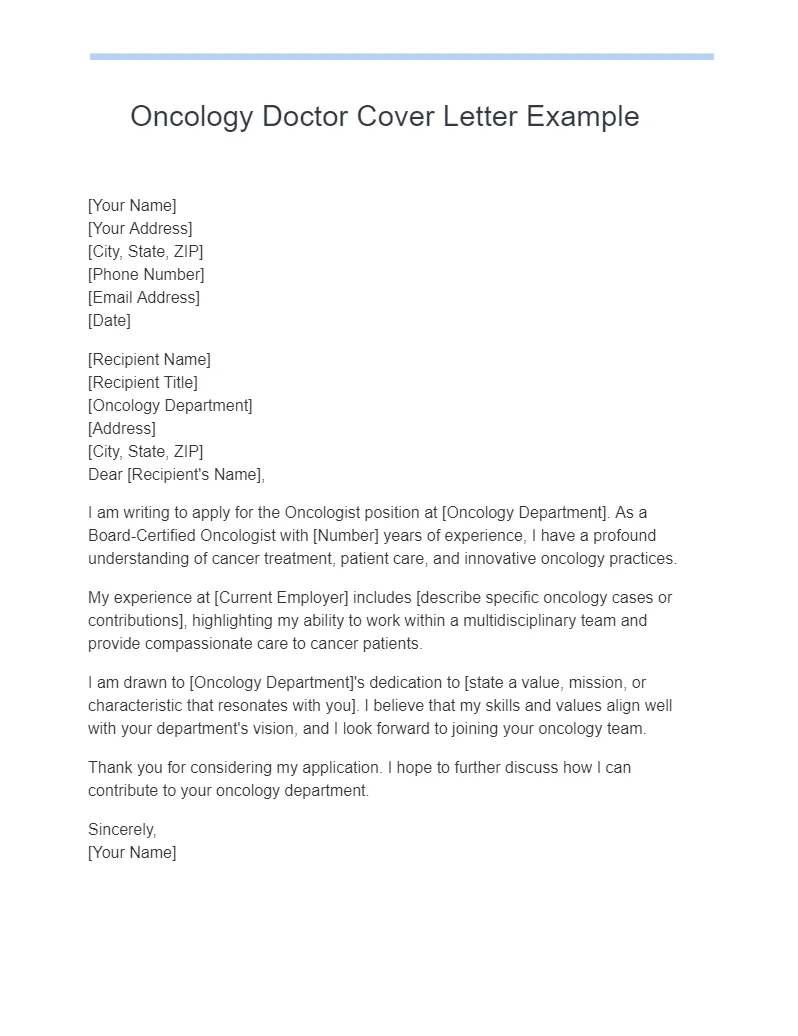
The body of your cover letter should provide details of your qualifications and experience. Focus on the skills and experiences most relevant to the job description. Use specific examples to showcase your achievements and demonstrate how your expertise aligns with the needs of the role. Clearly explain how your skills and experiences will benefit the organization, making a strong case for why you are the ideal candidate. Make sure that the information you provide is clear, concise, and easy to read.
Showcasing Relevant Skills and Achievements
When detailing your skills and achievements, be specific and provide concrete examples. Instead of simply stating you have excellent communication skills, describe situations where you effectively communicated with patients, colleagues, or families. When mentioning your achievements, quantify them whenever possible. Highlight any awards, publications, or special projects that demonstrate your expertise and dedication. By using specific examples, you can provide evidence that supports your claims, making your application more impactful.
Quantifying Accomplishments
Quantifying your accomplishments makes them more impactful and provides concrete evidence of your abilities. Use numbers to illustrate your successes. For instance, state the number of patients you treated, the percentage of patient satisfaction improvements, or any cost savings you achieved. Quantifiable metrics make your achievements more tangible and help the hiring manager better understand your value. Using numbers adds credibility to your application and demonstrates that you can deliver results.
Tailoring Your Letter to the Specific Job
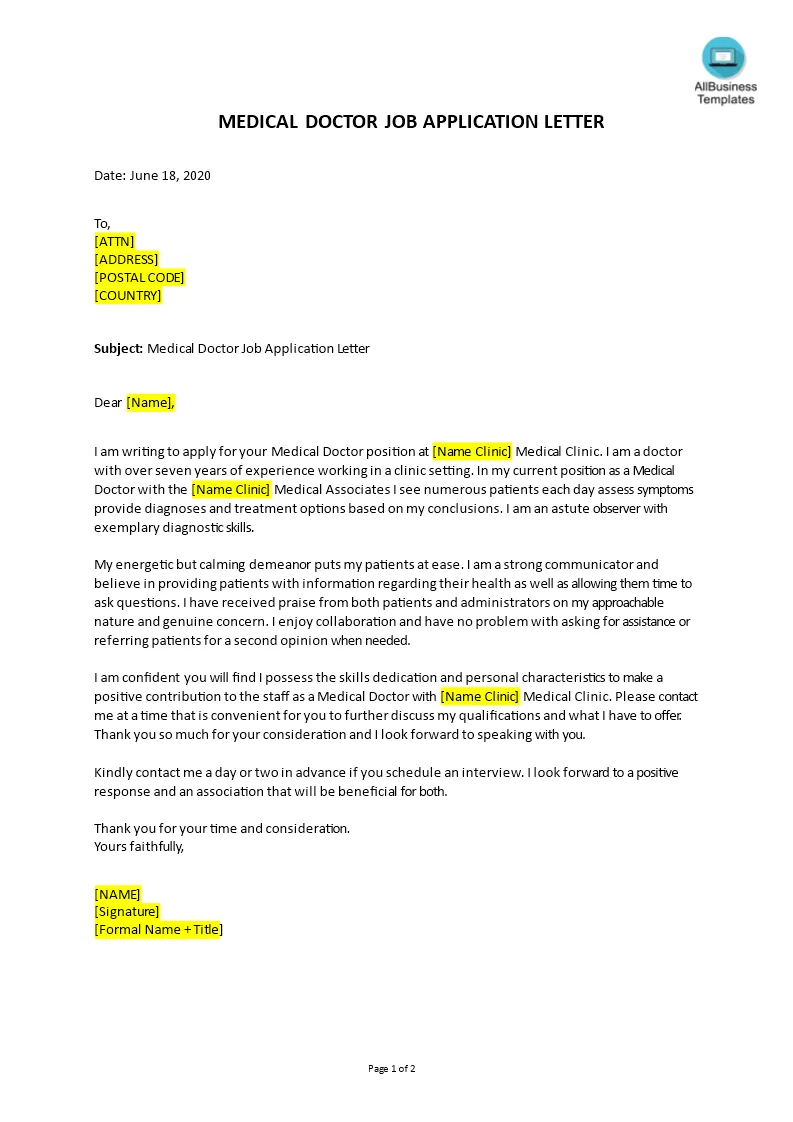
Customizing your cover letter for each job application is essential. Carefully review the job description and identify the specific skills, experience, and qualifications the employer is seeking. Tailor your letter to directly address these requirements. Use keywords from the job description to demonstrate your understanding of the role and the organization’s needs. Highlighting your skills, experiences, and achievements that align with the job description shows the hiring manager that you have what they are looking for, increasing your chances of being selected.
Demonstrating Your Interest in the Position and the Organization
Expressing your genuine interest in the position and the organization is critical. Your cover letter should demonstrate that you are not just looking for any job, but this particular opportunity. This section of your cover letter should be used to demonstrate your passion for the field, the values you adhere to and how they match with the organization’s needs. Showing the hiring manager that you are genuinely passionate about this particular role can significantly boost your application.
Expressing Enthusiasm and Researching the Employer
Express your enthusiasm for the position and the organization. Explain why you are excited about the opportunity and what specifically attracts you to the role or the organization. Research the employer to understand their mission, values, and culture. Mentioning specific aspects of the organization that appeal to you demonstrates your genuine interest and commitment. Showing that you have taken the time to understand the organization will make a positive impression, increasing your application’s chances of success.
Closing the Letter
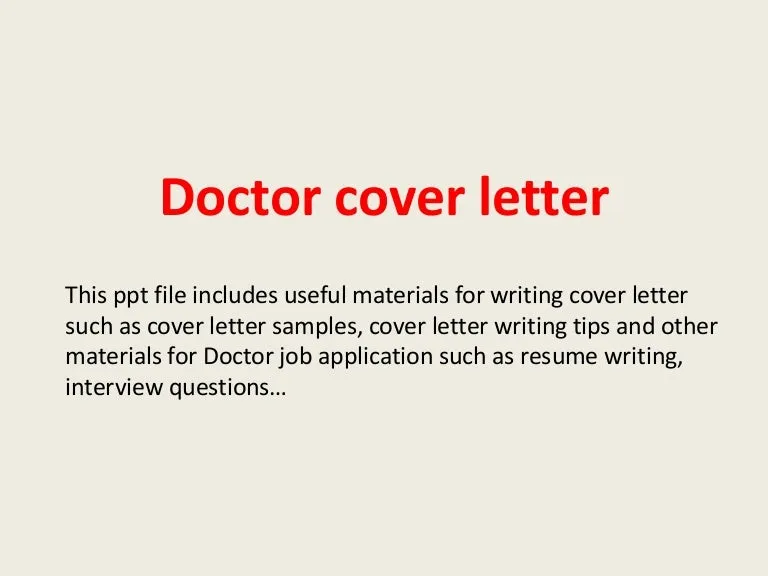
Your closing paragraph should summarize your key qualifications and reiterate your interest in the position. Thank the employer for their time and consideration. Provide a clear call to action, indicating your willingness to discuss your application further and your availability for an interview. A strong closing paragraph leaves a lasting impression and encourages the hiring manager to contact you.
Formal Closing and Signature
End your cover letter with a professional closing, such as “Sincerely,” or “Respectfully.” Leave space for your handwritten signature, and type your full name below the signature line. If you are sending an electronic application, you can type your name. Ensure that your closing is courteous and reflects the tone of your letter. The formal closing and signature complete your letter, providing a polished and professional presentation of your application.
Review and Proofread Your Cover Letter
Before submitting your cover letter, carefully review and proofread it for any errors. Errors can detract from your professionalism and might lead to your application being overlooked. Take the time to carefully review every aspect of your letter, checking for grammar, spelling, and punctuation errors. Ensuring that your cover letter is free of mistakes is a critical step.
Ensuring Accuracy and Clarity
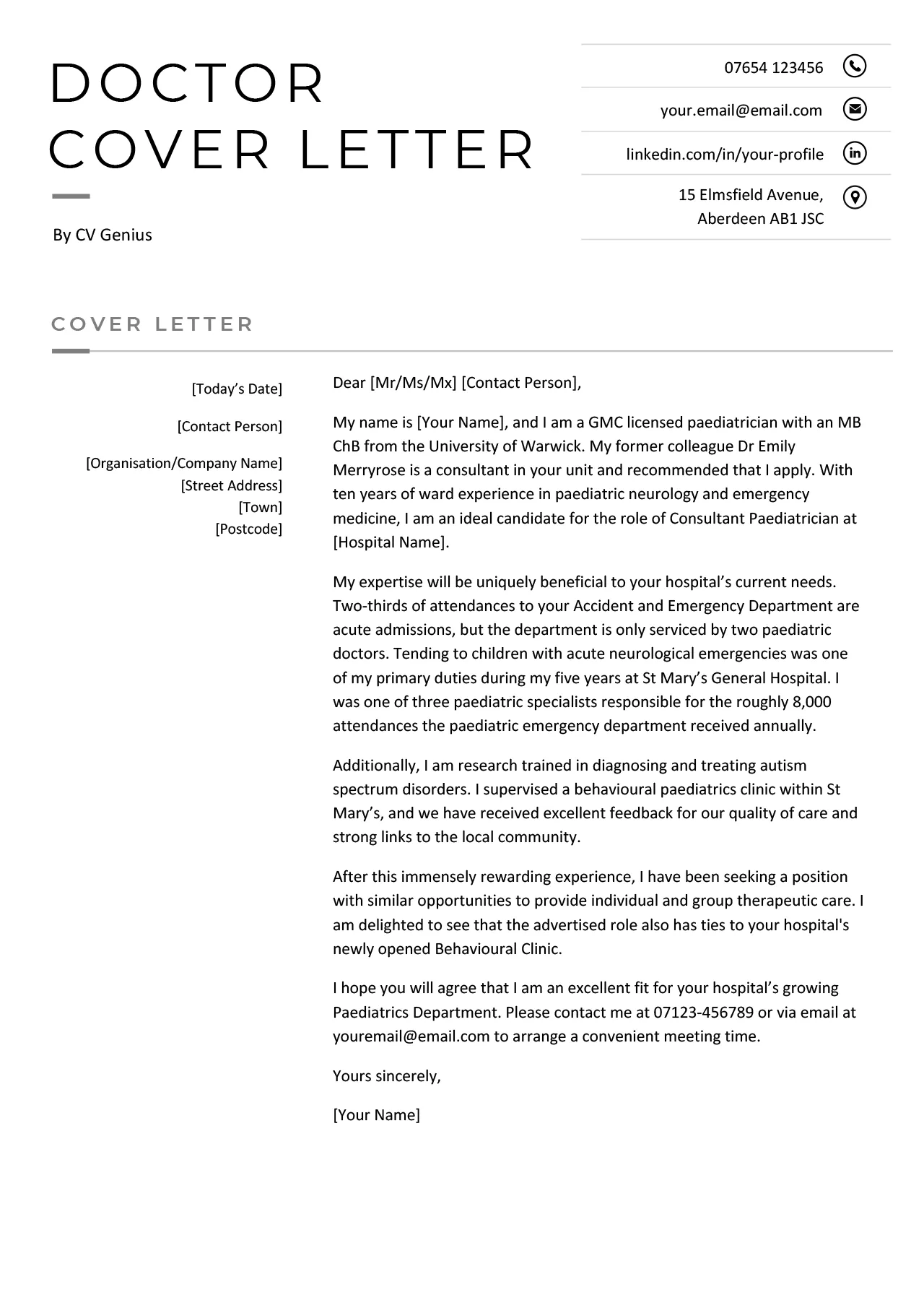
Make sure your cover letter is accurate, clear, and easy to understand. Avoid using jargon or overly complex language. Use concise sentences and paragraphs to convey your message effectively. Ensure that your qualifications and experiences are clearly presented and that your letter is well-organized. Clear and concise communication will make your cover letter more impactful, helping you to get the attention of the hiring manager.
Seeking Feedback
Ask a trusted friend, mentor, or career counselor to review your cover letter. Getting a second opinion can help identify any errors or areas for improvement that you might have missed. Ask for feedback on the clarity, organization, and overall impact of your letter. Use their suggestions to refine your cover letter and create the best possible impression. Getting a fresh perspective is a valuable step in the job application process.
